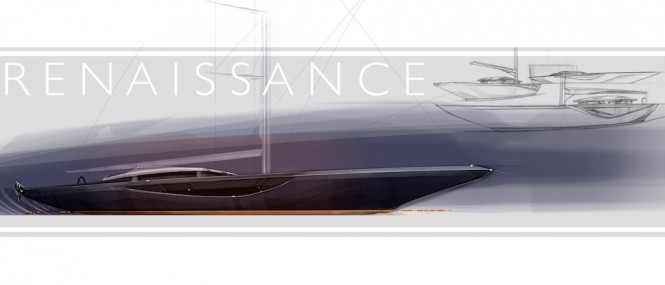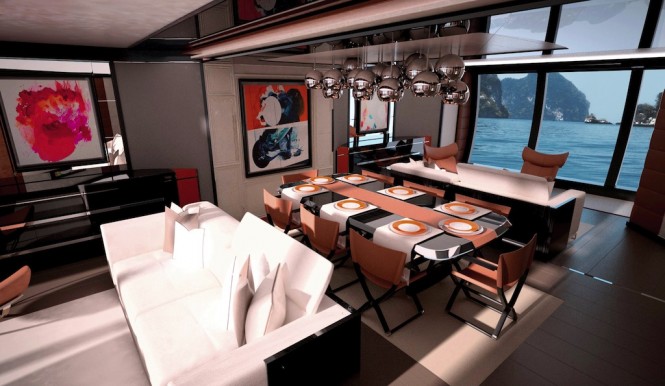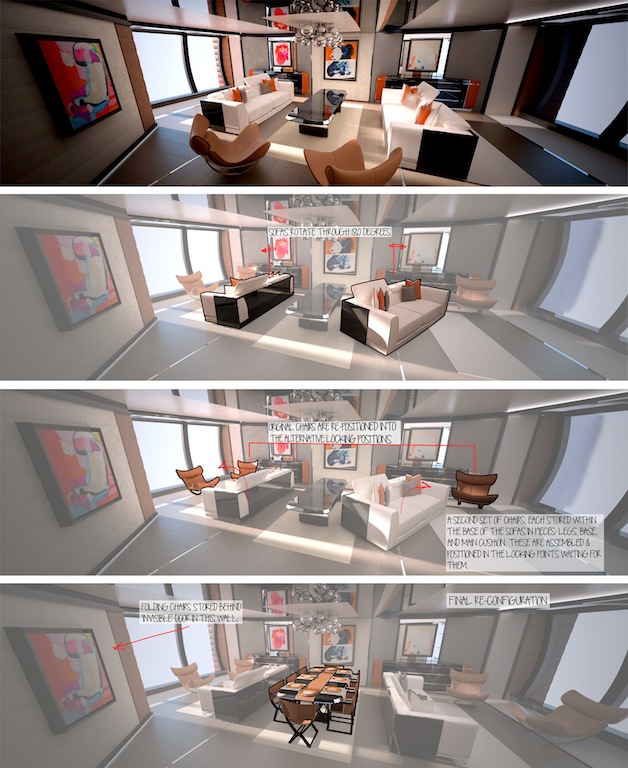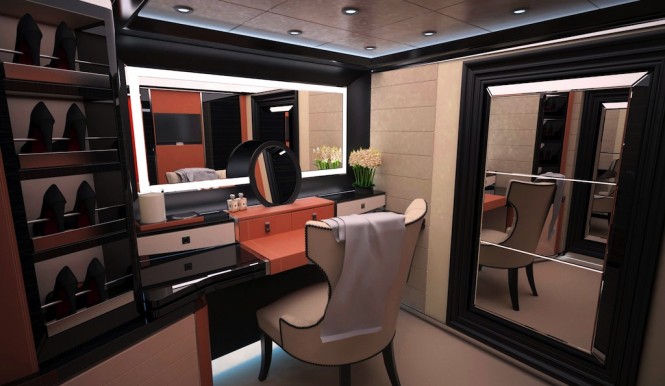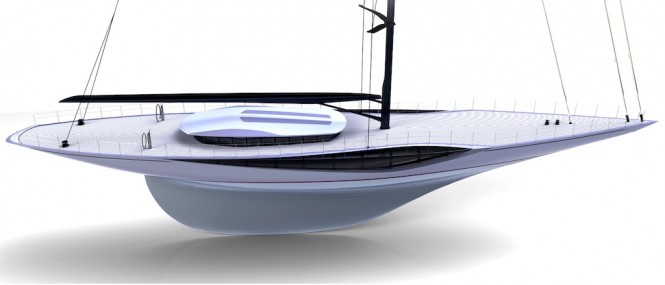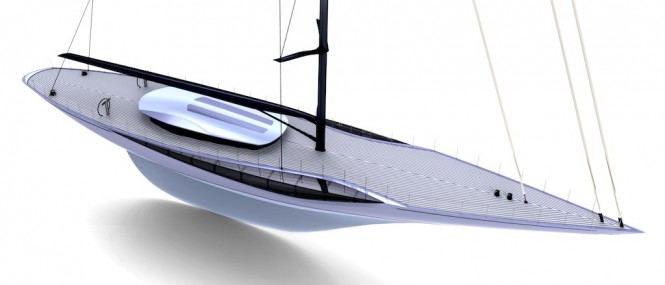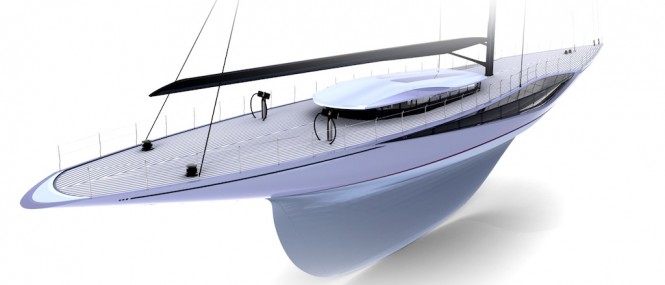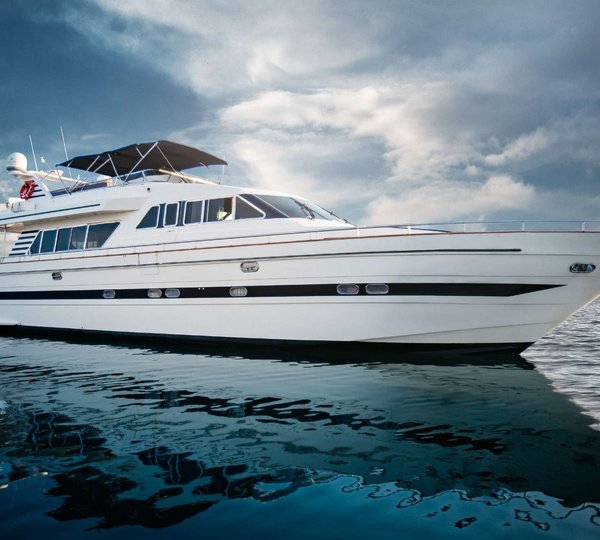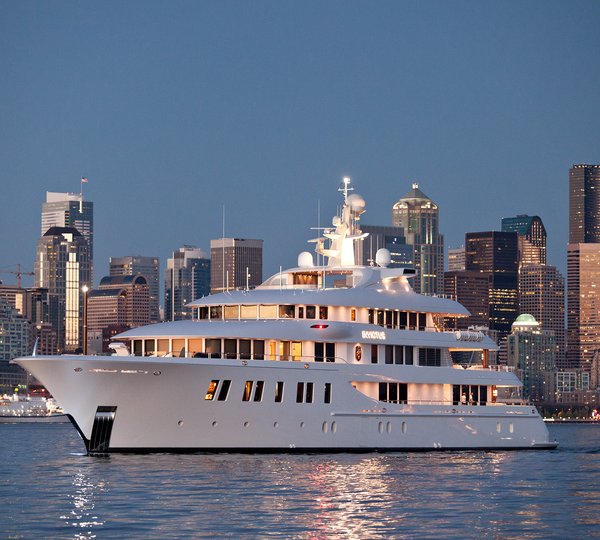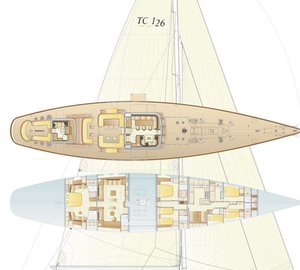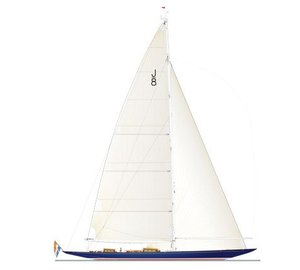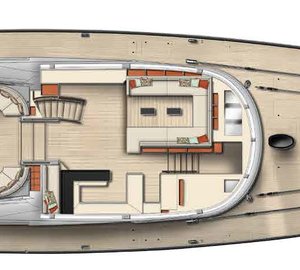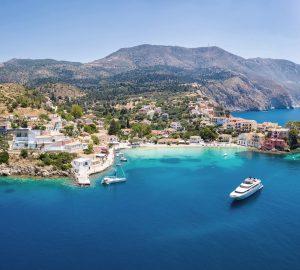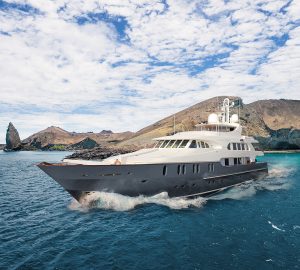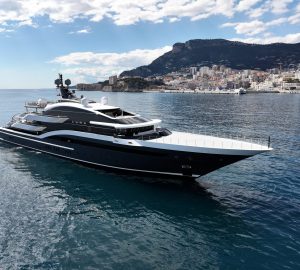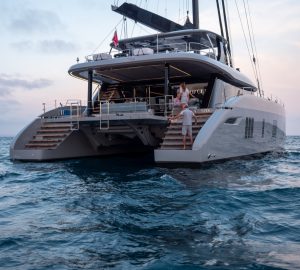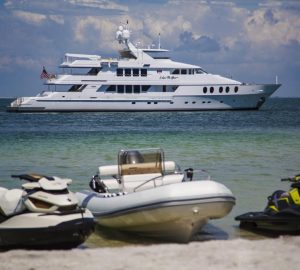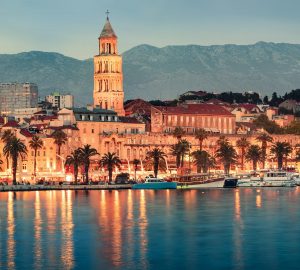Emerging luxury yacht designer, George Wolstenholme of GNWDesigns created a beautiful sailing yacht Renaissance concept inspired by the elegant, classic J-Class vessels. The intention behind the Renaissance superyacht project was to discover the essence by which the J-Class exuded such elegance, and to fuse this DNA with a modern day package.
“I wanted to create a concept with more than just the future in mind, a concept that remembers the past whilst embracing the world that we now and in the future will live in.”
Renaissance’ is longer than the original J-Class with an LOA of 47 meters, as well as being a slightly beamier 8.5 meters. This allows for an interior volume much more apt for todays market than the confines of the original yachts.
“I believe that beauty stems from simplicity, a concept that marries perfectly with the J-Class, and a concept that I wished to stay true to whilst creating my modern J-Class. “
George Wolstenholme treated the large glasshouse as the main feature of the exterior design, the centrepiece by which the rest of the boat would benefit. Every element of ‘Renaissance’ had to link together in someway. He didn’t want the elements of the exterior to feel disconnected from the each other and wanted each element of the yacht from the exterior to interior to be connected not necessarily with blatancy, but with subtlety. The glasshouse allowed for these connections. He was able to visually connect the glasshouse to the hull, the deck and the superstructure, both individually and as one. The design of the glasshouse and the relating features are dynamic and elegant, and lines of relation can be drawn between them all.
“I find that sailboats can often deliver a very stark contrast between life on deck, and life below it. On the deck of a sailboat you feel that you are connected to more than just the vessel, but a part of the environment that surrounds you. “
Moving into the interior however, more often than not you are faced with tight spaces that are made to feel tighter by the use of dark woods, small portholes, and a lack of natural light. My interior had to mimic life on deck, below it. Due to the confines of the interior, it was imperative for me to use a selection of methods that would make these spaces seem as large as possible. To achieve this Wolstenholme utilised light fabrics and wall claddings, oversized floorboards, the clever use of mirrors and reflective surfaces, and a general effort to keep the spaces as minimal and open plan as possible. This is all enhanced by the vast amount of natural light that is allowed to flood in through the glasshouse.
“There did however need to be a balance, I understood that if every element of the interior was light and ‘space enhancing’ it would appear washed out. So the pale walls and soft furnishings are in contrast to dark stained, highly lacquered wooden fittings, often detailed with some tan or ‘Hermes’ orange leather detailing. I also wanted to incorporate some colourful, abstract, modern artworks to add to some excitement, interest, and depth to spaces. The use of mirrors and reflectivity are subtle, not so much that it becomes overpowering and confusing, but just enough to really accentuate the feeling of space.”
The key element to the interior is its flexibility. As a sailboat interior is much more confined than a motor yacht of a similar size, it was important for the designer to get as much functionality out of the space as he could. He wanted the owner to have options; alternatives to dining, alternatives to lounging, and alternatives for formal and informal circumstances, all culminating into the luxury that is freedom. The adaption occurs in the common areas, the external living area, the upper saloon, and lower saloon, can all be reconfigured to adjust the way that the boat is used for lounging and dining. There would be no compromise, the furnishings couldn’t suffer just because they needed to transform. It was important to make luxury flexible, not feign an attempt to make flexibility luxurious.
The Classic J-Class Vessels
The classic J-Class were a fleet of ten sailing yachts designed and built between the years of 1930 and 1937 to compete in the America’s Cup. These yachts were un-complicated, sleek, and utterly beautiful. WWII saw the running of the America’s Cup cease for over two decades, and the development of the J-Class with it. When in the year 2000 the class rules were adapted to allow for original J’s to race alongside replicas and new builds from original plans, the true renaissance of the J-Class began. With four J’s delivered in recent years, and thre more currently in build, it is clear that the beauty, prowess and heritage of the class is proving infectious.

